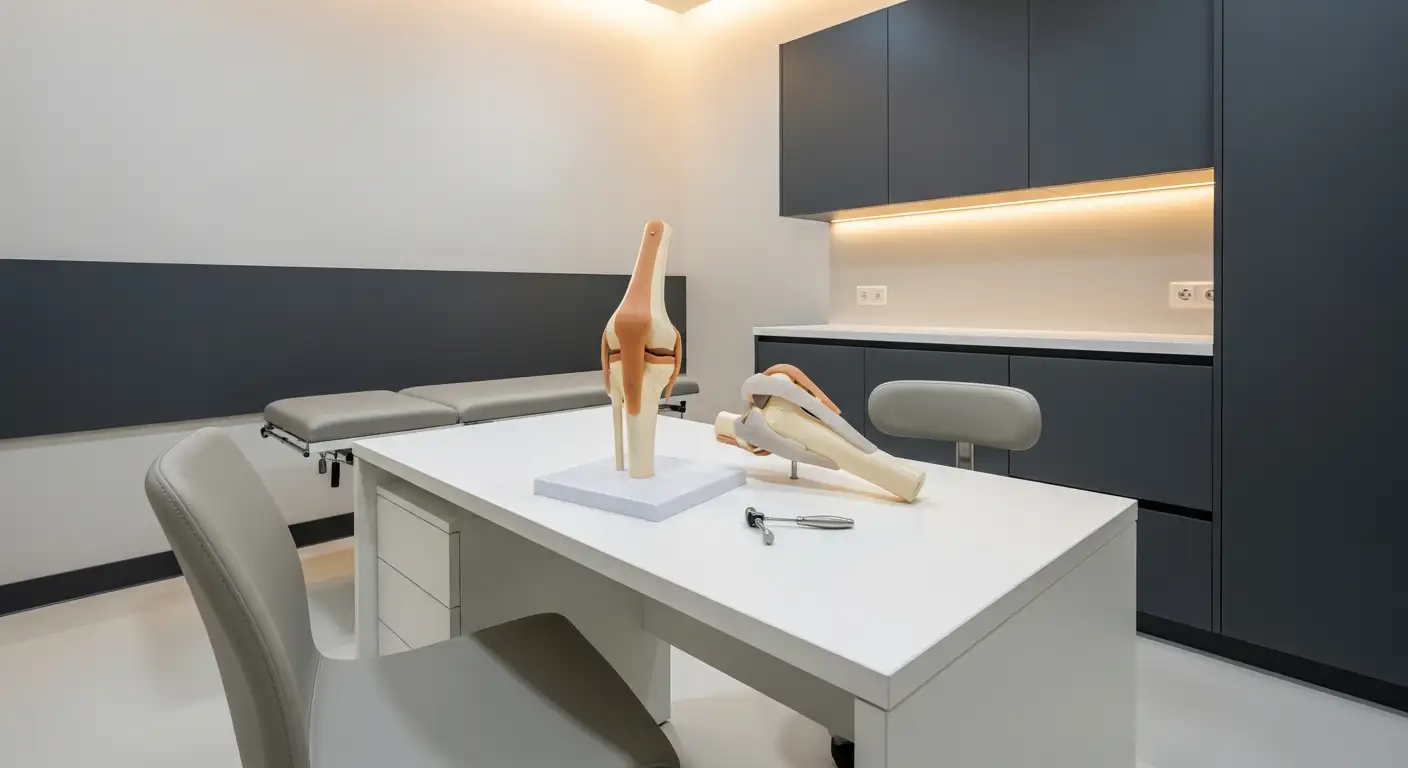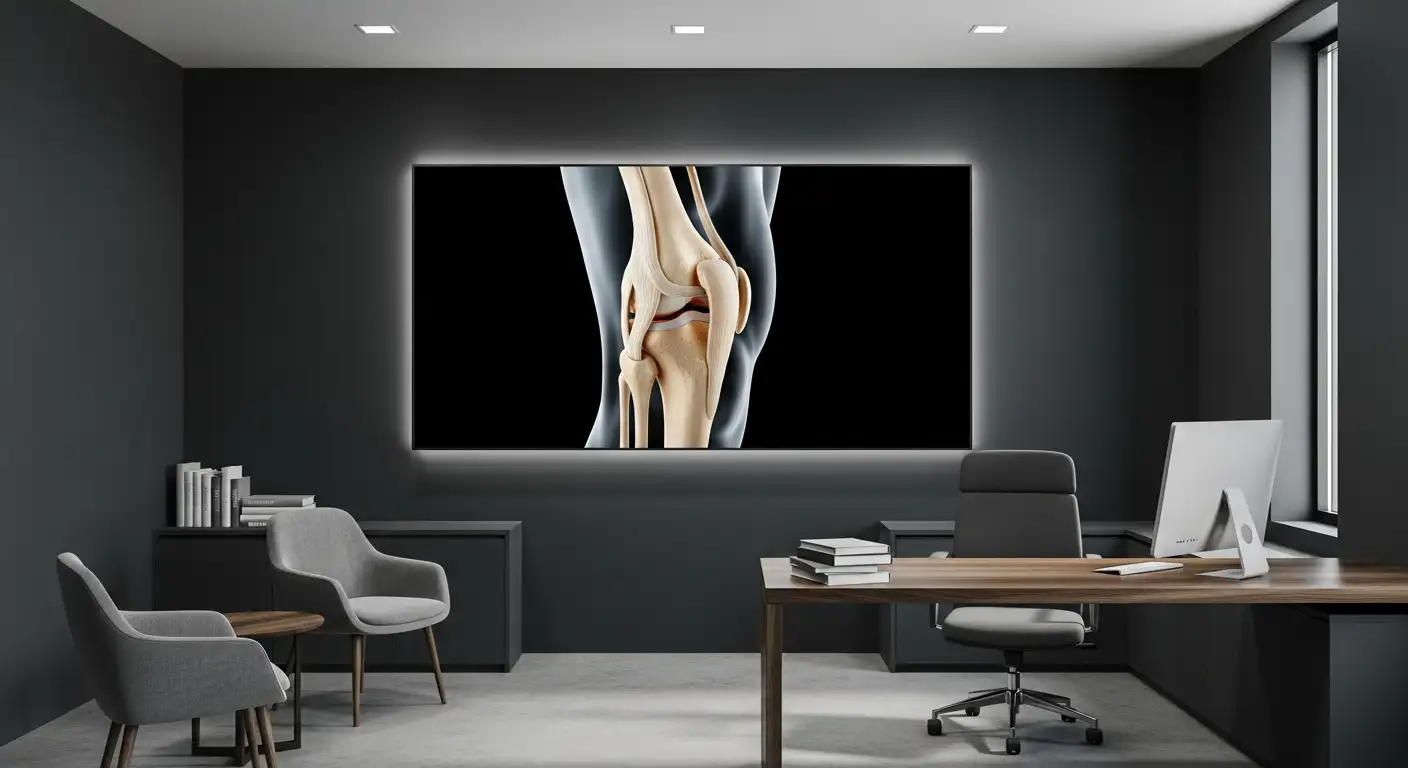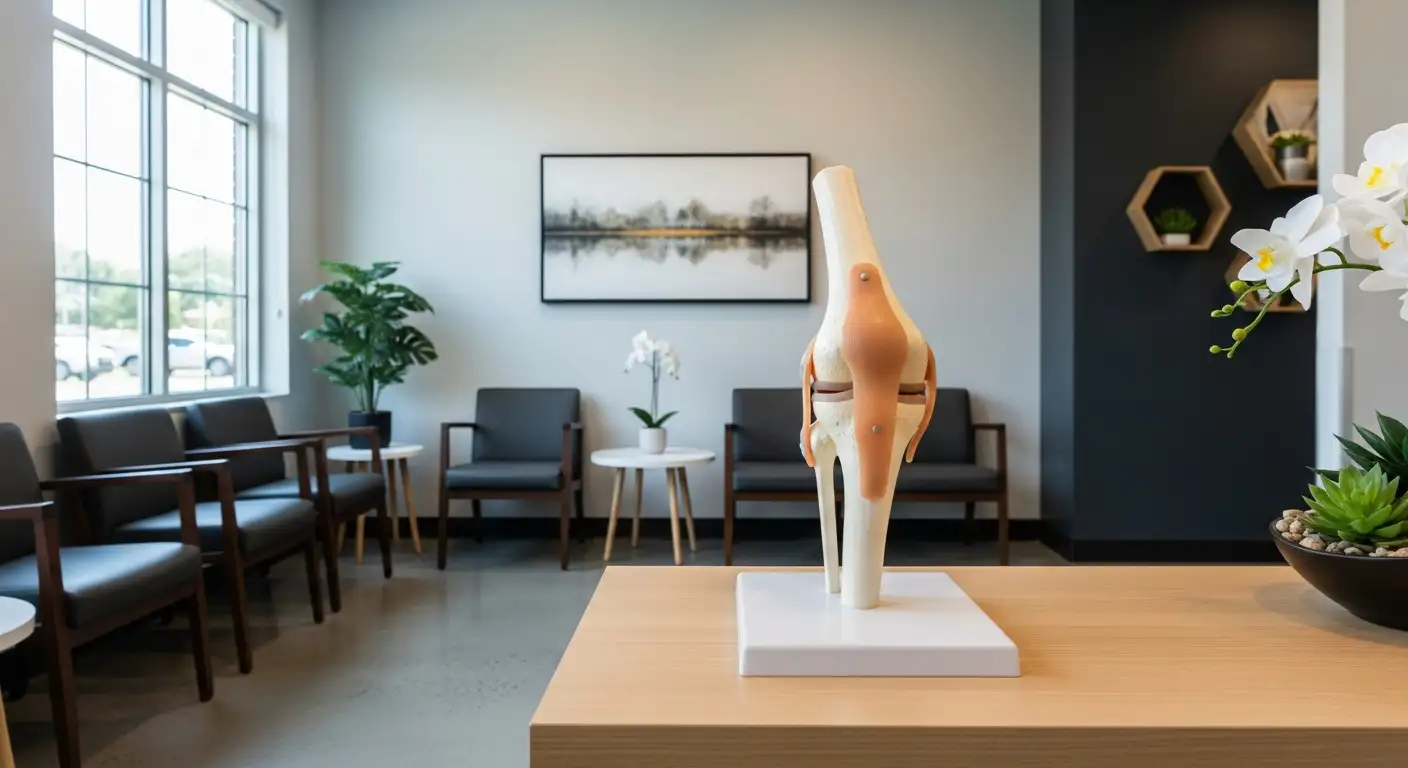Understanding Knee Pain
Knee pain is a common complaint that affects people of all ages. It can be the result of an injury, such as a ruptured ligament or torn cartilage, or it can be due to certain medical conditions like arthritis, gout, and infections. In many cases, knee pain can be exacerbated by certain movements or postures, such as crouching, which places additional strain on the knee joint.
Anatomy of the Knee
The knee is one of the largest and most complex joints in the body. It consists of the lower end of the femur (thighbone), the upper end of the tibia (shinbone), and the patella (kneecap). These bones are connected by a network of ligaments and tendons, and cushioned by cartilage, which provides shock absorption and reduces friction between the bones.

The knee joint also contains several structures that contribute to its flexibility and range of motion. These include the meniscus, a C-shaped piece of cartilage that acts as a shock absorber between the femur and tibia, and the cruciate ligaments, which provide stability and control the back-and-forth motion of the knee.
When these structures become damaged or inflamed, it can result in knee pain. Understanding the anatomy of the knee can therefore be helpful in identifying the underlying causes of knee pain when crouching.
Common Symptoms of Knee Pain
The symptoms of knee pain can vary depending on the cause and severity of the condition. Some common symptoms associated with knee pain include:
- Pain or discomfort in the knee, which may be sharp or dull, constant or intermittent, and may worsen when crouching or bending the knee.
- Swelling and stiffness in the knee joint, which can make it difficult to move or bend the knee.
- Redness and warmth around the knee, which can indicate inflammation or infection.
- Instability or weakness in the knee, which can make it feel as though the knee is going to give out.
- Popping or crunching noises in the knee, which can indicate damage to the cartilage or meniscus.
- Inability to fully straighten the knee, which can be a sign of a knee injury or condition.
Getting a comprehensive understanding of the symptoms associated with knee pain can help in the process of diagnosing and treating the condition. If you experience persistent knee pain when crouching, it is important to seek medical attention to determine the underlying cause and appropriate treatment options.
Causes of Knee Pain When Crouching
The act of crouching places a significant amount of stress on the knee joint. This can lead to discomfort or pain in certain individuals, especially if underlying conditions or injuries are present. Here, we explore the two main categories of causes behind knee pain during crouching: injuries and trauma, and chronic conditions or overuse.
Injuries and Trauma
Injuries involving the knee joint can lead to acute knee pain when crouching. Instances of sudden knee pain, especially following a fall or trauma, could be indicative of a fracture, ligament injury, or dislocation, necessitating immediate medical attention.
A popping or crunching sensation in the knee during crouching might point to an injury to the cartilage or ligaments, suggesting the need for evaluation by a healthcare provider [1].
Chronic Conditions and Overuse
In many cases, knee pain when crouching can be attributed to chronic conditions or overuse of the knee joint. For instance, patellar tendinitis, common among athletes and individuals engaged in physical activities requiring a lot of jumping and running, involves inflammation of the patellar tendon, leading to pain when squatting.
Osteoarthritis, a condition that results in wear and tear of the joint cartilage over time, can also lead to knee pain when squatting or bending. Similarly, conditions like meniscus tears, other ligament injuries, and bursitis can cause pain during these movements [3].
Muscular imbalances can also result in knee pain. This is when one group of muscles is stronger or more overworked than another, which can lead to pain in the knee joint. Overuse injuries and repetitive stress from daily activities like jogging or climbing stairs can exacerbate this pain.
Patellofemoral syndrome, often resulting from an imbalance in the muscles supporting the knee joint, can lead to discomfort during activities like kneeling, squatting, or climbing stairs.
Any knee pain that interferes with daily activities, persists despite rest, or is accompanied by fevers or chills could indicate an infection or inflammatory condition, and should prompt a visit to a healthcare provider promptly.
It's important to remember that the root cause of knee pain when crouching can vary greatly from person to person. Therefore, it's crucial to seek a medical diagnosis to understand the specific cause and form an appropriate treatment plan.
Diagnosing Knee Pain
Identifying the exact reason for experiencing knee pain when crouching often requires a comprehensive diagnosis process. This typically involves a physical examination and various imaging tests.
Physical Examination
A physical examination is usually the first step in diagnosing knee pain. A healthcare professional will assess the knee's range of motion, stability, and strength. They may also palpate the knee, applying gentle pressure to identify areas of tenderness, swelling, or warmth.
During this examination, the individual may be asked to perform specific movements or postures that trigger the knee pain. This could include crouching, walking, or squatting. These activities help the healthcare professional assess the mechanics of the knee joint and pinpoint the source of pain.
Imaging Tests
Once the physical examination is complete, the healthcare professional may recommend imaging tests for a more detailed assessment. These tests help visualize the internal structures of the knee joint, such as the bones, cartilage, tendons, and ligaments.
The two most commonly used imaging tests for diagnosing knee pain are X-rays and Magnetic Resonance Imaging (MRI).
An X-ray uses a small amount of radiation to produce images of the bones and joints. It can reveal fractures, bone spurs, or signs of arthritis.
On the other hand, an MRI uses strong magnetic fields and radio waves to produce detailed images of the soft tissues in the knee. This test can reveal damage to the cartilage, ligaments, tendons, or muscles.
The choice of imaging test often depends on the suspected cause of the knee pain. For example, an X-ray might be more useful for detecting bone-related issues, while an MRI is better suited to identifying soft tissue injuries.
By combining the findings from the physical examination and the imaging tests, a healthcare professional can accurately diagnose the underlying cause of knee pain when crouching [8]. This comprehensive diagnosis is crucial for developing an effective treatment plan and mitigating further discomfort or damage.
Treatment Options for Knee Pain
Knee pain when crouching can be a hindrance to daily activities. The good news is that there are several options available to manage and treat this discomfort. These include conservative treatments and surgical interventions.
Conservative Treatments
Conservative treatments are non-invasive methods that are usually the first line of treatment for knee pain when crouching. These methods aim to reduce inflammation, relieve pain, and improve knee function.
One of the most recommended conservative treatments is the RICE method, which stands for Rest, Ice, Compression, and Elevation. This method can help reduce swelling and alleviate pain [6].
Over-the-counter medications like Non-Steroidal Anti-Inflammatory Drugs (NSAIDs) or acetaminophen can also help manage knee pain. These medications work by reducing inflammation and relieving pain.
Physical therapy is another conservative treatment method. It involves a series of exercises designed to strengthen the muscles around the knee and improve flexibility, which can help reduce knee pain and improve function [2].
In some cases, a healthcare professional might recommend using a knee brace. This device can support the knee, reduce pain, and prevent further injury.
Additionally, corticosteroid injections can be used to manage severe knee pain. These injections contain a steroid medication that can reduce inflammation and alleviate pain.
Surgical Interventions
If conservative treatments do not effectively manage knee pain when crouching, surgical interventions may be considered. The recommended surgical procedure will depend on the severity of the pain and the underlying cause.
Knee arthroscopy is a minimally invasive procedure that involves inserting a small camera into the knee to diagnose and treat several knee conditions. This procedure can be used to repair or remove damaged cartilage or tissue.
In severe cases, a knee replacement surgery might be recommended. This procedure involves replacing the damaged parts of the knee with artificial components.
It's important to consult with a healthcare professional before starting any treatment plan. They can provide a comprehensive evaluation and recommend the most suitable treatment options based on the specific cause and severity of the knee pain.
Preventing Knee Pain When Crouching
Preventing knee pain when crouching or bending involves a combination of proper exercise and lifestyle modifications. These preventive measures aim to strengthen the knee and promote overall joint health, reducing the risk of injuries and chronic conditions that can cause knee discomfort.
Exercise and Technique
Regularly engaging in exercises that strengthen the muscles supporting the knee can help reduce knee pain when crouching and during other activities [4].
Additionally, proper warm-up before physical activities and ensuring correct technique during exercises can help prevent knee pain when squatting and reduce the risk of developing knee injuries. It's important to listen to the body, avoid overexertion, and give the knees adequate rest to prevent pain and discomfort [2].
Lifestyle Modifications
Making certain lifestyle adjustments can also help in preventing knee discomfort when crouching. Maintaining a healthy weight, staying active, wearing proper footwear, and using correct techniques during physical activities are all effective strategies to avoid injury. For individuals with sedentary lifestyles, setting reminders to move around hourly can be beneficial for overall joint health.
Additionally, maintaining a healthy diet and staying hydrated can contribute to overall joint health and prevent knee pain. Exercise programs aimed at strengthening the muscles around the knee can also help prevent knee pain.
By combining regular exercise with appropriate lifestyle modifications, it's possible to manage and even prevent knee pain when crouching, improving overall knee and joint health. It's always important to consult with a healthcare professional or physical therapist for personalized advice and guidance.
When to Seek Medical Attention
Understanding the signs that indicate when to seek medical attention for knee pain when crouching can help ensure prompt treatment and prevent further damage.
Signs and Symptoms
Experiencing knee discomfort when bending or crouching is common, but certain signs suggest that professional medical advice is necessary. According to the Mayo Clinic, if knee pain persists for several days, is severe, or is accompanied by redness, swelling, or a feeling of warmth around the knee, it could be a sign of a more severe underlying condition.
Similarly, if the knee pain worsens when bearing weight or if there's a popping or crunching sensation in the knee when crouching, it could indicate an injury to the cartilage or ligaments, suggesting the need for evaluation by a healthcare provider.
Sudden knee pain when crouching, especially after a fall or trauma, could be due to a fracture, ligament injury, or dislocation, necessitating immediate medical attention.
Finally, knee pain that interferes with daily activities, persists despite rest, or is accompanied by fevers or chills could indicate an infection or inflammatory condition, prompting a visit to a healthcare provider promptly.
Long-term Prognosis
The long-term prognosis for knee pain when crouching largely depends on the underlying cause. Conditions like arthritis, meniscus tears, ligament injuries, patellar tendinitis, and bursitis can cause knee pain when bending or squatting, and each requires a different treatment approach.
In some cases, knee pain can be caused by a muscular imbalance, where one muscle group may be stronger or more overworked than another group [4]. Addressing this imbalance through stretching, strength training, and lifestyle modifications can improve the long-term prognosis.
However, it is always advisable to seek professional medical advice if knee pain is sudden, sharp, affects mobility, prevents weight-bearing, or persists despite conservative measures like resting, icing, or pain medication.
By recognizing the signs and symptoms that necessitate medical attention, individuals can take proactive steps to address knee pain when crouching, potentially improving their long-term knee health and function.
References
[1]: https://www.mayoclinic.org/symptoms/knee-pain/basics/when-to-see-doctor/sym-20050688
[2]: https://www.healthline.com/health/knee-pain-when-squatting
[3]: https://www.spirehealthcare.com/health-hub/specialties/bones-and-joints/knee-pain-when-bending-or-squatting/
[4]: https://www.hss.edu/article_stretches-exercises-knee-pain.asp
[5]: https://www.vanthielmd.com/understanding-knee-pain-in-young-adults/
[6]: https://www.medicalnewstoday.com/articles/311280
[7]: https://www.nhsinform.scot/illnesses-and-conditions/muscle-bone-and-joints/exercises/exercises-for-knee-problems/
[8]: https://my.clevelandclinic.org/health/symptoms/21207-knee-pain





